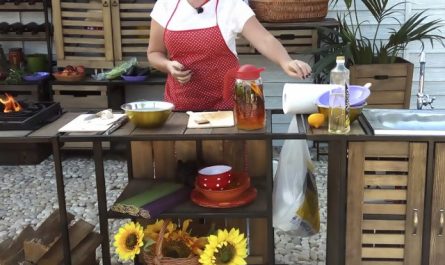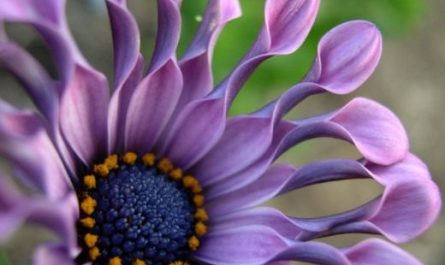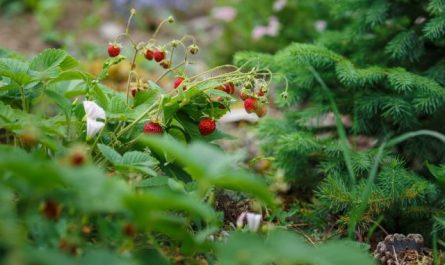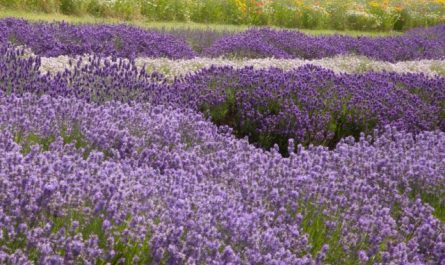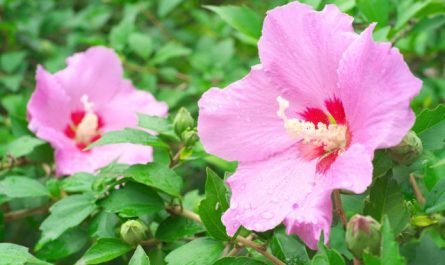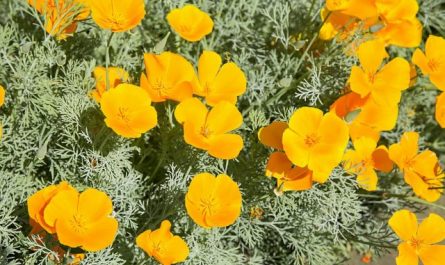A dacha is not only a plot of land for growing ecologically clean vegetables and fruits, but also a place to relax. Each of us tries to plant a flower garden here to be surrounded by beauty. But plants require care, and there is already a lot to do in the garden. And on weekends you want to recover from a hard week of work, and not to toil from morning to night on suburban acres.

In fact, nothing is impossible. Unpretentious winter-hardy perennial flowers that require minimal care can be planted in flowerbeds. We will tell you about beautiful decorative perennials that do not need winter shelter in the middle zone.
In what cases is it better to cover perennials?
All the groups of flowering plants listed in the article are frost-resistant and winter well in the middle zone without shelter. However, it is important to understand that within each genus there are more and less cold-resistant varieties. Hybrids bred in France and Holland will most likely tolerate frosts worse than those obtained in Russia.
Young bushes planted this season are also at risk. In order not to lose them, it is advisable to mulch the trunk circle with peat or rotted manure in late autumn, and cover the plants with spruce branches. In this case, they will overwinter well, they will not have to recover for a long time, and in the near future they will be covered with bright, eye-pleasing flowers.
8 Frost-Resistant Perennials
1. Tulip
Tulip (Tulipa) is a genus of bulbous perennial herbaceous ephemeroids belonging to the Liliaceae family. During a warm spring, most varieties delight us with flowers as early as May 9. If the year is cold, the first buds may appear only by the end of the month. But there are hybrids that bloom in April and June. The ornamental culture is so beautiful that tulip mania captured entire countries. There were periods when the flower was unusually fashionable in the Ottoman Empire, Western Europe, and Byzantium.

Nowadays, tulips are no less popular. Breeders have put a lot of effort into creating plants with double, fringed, lily-shaped, green-flowered and parrot-shaped flowers. The variety of colors can amaze even the most sophisticated gardener. Flowers can be red, yellow, pink, almost black, crimson, purple, single-color and two-color, with stripes and other patterns.
Tulips like sandy loam soils, light and medium loams with a pH of 6,5-7,5 without stagnant water (lowlands are not suitable). They need a sunny place, protected from the winds. After flowering, usually in the second half of June, the bulbs are dug up, dried, and stored. They are planted in the fall, approximately from September 15 to October 15 (depending on the weather).
Most tulip varieties overwinter well without shelter, but at the beginning of November it is better to mulch them with peat or humus, a layer of 10 cm. More often, crops with simple red flowers are more frost-resistant than those with flowers of an unusual shape, far from those found in the wild, and rare colors.
2. Aquilegia
Aquilegia, or columbine, is a genus of perennial herbs that belong to the buttercup family (Ranunculaceae). The exquisite flower is flawless. The corolla consists of 5 petals resembling a funnel. The spurs are usually bent at the end and give the flower a bizarre, graceful shape. Japanese and Chinese varieties do not have spurs. The height of the plant varies from 40 cm to 1 m. The flowers are drooping, quite large. They can be white, golden, lilac, yellow, crimson, purple, blue or two-colored. Most varieties bloom in May and June.

Aquilegia prefers slightly shaded areas. The flower crop is not demanding to the soil, but likes fertile, loose, moist soil with a neutral reaction. It is advisable to water the plant once a week. In the wild, representatives of the genus grow in the northern hemisphere, so in the climate of moderate latitudes of the middle zone, aquilegia winters without shelter. However, in the year of planting, it is advisable to mulch the seedlings with a thick layer of peat and cover them with dry leaves or spruce branches.
3. Iris
Iris (Iris), or cockerel and iris, is a genus of perennial rhizomatous plants with a rich palette of colors and shades. In gardens, the most commonly grown are German iris (Iris germanica), Siberian iris (Iris sibirica) and bearded iris (Iris hybrida), which received its name due to the bristles on the outer petals, resembling a beard.

Interesting fact! The flower is named after the ancient Greek goddess Iris, who descended to earth on a rainbow. The word “iris” is translated from Greek as “rainbow”.
Iris flowers are large, unusually beautiful and graceful. With a soft aroma, in shape they vaguely resemble orchids. The color range is very diverse. The group includes decorative perennials with a height of 20 to 120 cm. In the Moscow region, they bloom from late May to July (the time depends on the variety).
Irises are light-loving and grow in all soils except swampy and excessively moist soils. The ideal soil is slightly acidic, loamy, drained and rich in organic matter. Plants are usually propagated by dividing the bush, planting the divisions in late August or early spring. The most frost-resistant varieties are those bred in Russia.
4. Daylily
Hemerocallis is a genus of perennial rhizomatous herbaceous plants from the Asphodelaceae family. Although the genus includes about twenty species, only a quarter of them are usually grown in gardens. Hemerocallis fulva is especially popular. It is unpretentious, with exquisite, large orange flowers that resemble a lily in shape. It grows quickly, taking over new spaces, and requires almost no care. It blooms in June and July.

Summer residents also grow other species with yellow, brown, pinkish, and, less often, purple flowers. They bloom from late May to early August (depending on the variety). Modern hybrids, bred in the process of crossing different species, are united into a common type – hybrid daylily (Hemerocallis hybrida). They are all similar in appearance: with large funnel-shaped flowers, fleshy roots and elongated leaves that form a spectacular arc.
It is better to plant daylilies in the sun. They tolerate light shading, but bloom worse if there is a lack of light. The soil should be rich in humus and moist. Sandy soil is not suitable. Most varieties are frost-resistant and do not require shelter in the Moscow region, but for the winter it is better to mulch them with a thick layer (10 cm) of peat or humus.
5. Peony
Peony (Paeonia) is a genus of herbaceous and deciduous shrubby (tree peony) perennials. Most varieties bloom in June and the first ten days of July. This is an unusually beautiful plant. At the height of flowering, it is covered with a cap of large flowers of crimson, pink, white, red, cream, burgundy, yellow, lilac and even purple shades. The flowers exude a sweet aroma of lollipops, attracting pollinating insects.

Peonies can grow in one place for more than 10 years. They need good lighting, so you need to choose a sunny area for the flowerbed. The ornamental crop does not like wind (especially cold, northern). You will have to allocate a secluded corner for the flowerbed, fenced off from the north by a fence, barn or house. To plant the plant, prepare a large hole with a diameter and depth of 70 cm, filled with fertile soil, humus or compost.
Important! The groundwater level should not be closer than 1 m from the soil surface. Otherwise, upon reaching the water, the roots will rot and the plant will die.
Peonies are usually propagated by dividing the bush from August 15 to September 15. Each division should have 3-5 buds and a good root. Tree varieties are not winter-hardy enough. In October, they are mulched with peat. Before the onset of frost, their shoots are tied and the bushes are covered with spruce branches, burlap or spunbond. But most herbaceous peonies are not afraid of the cold and winter in the Moscow region without shelter. If severe frosts without snow are expected, they can be hilled with peat or humus just in case.
6. Nivyanik
The daisy (Leucanthemum) will always have many fans, because it is unusually similar to everyone’s favorite chamomile. And yet, these are different flowers. The ornamental culture is an annual or perennial herbaceous rhizome plant with inflorescences-baskets. The marginal flowers are white, sometimes yellow, tubular (middle) – yellow.

Now breeders have developed interesting hybrids from 30 to 100 cm high, with double and large inflorescences, up to 12 cm in diameter. Most varieties bloom from late June to mid-July. But there are also those that delight us until September.
The undoubted favorite among summer residents is the magnificent daisy (Leucanthemum superbum). It grows up to 90 cm in height, and charms its owners with large, lush, double inflorescences-baskets with white marginal petals and very delicate pale golden tubular flowers in the middle.
Leucanthemum loves the sun, in extreme cases, it can be planted in light partial shade. The soil should be fertile and cultivated. It is recommended to divide adult plants once every 4 years in early spring or in September.
Important! Leucanthemum loves water. It needs to be watered about once a week, and in extreme heat twice in 7 days. Without abundant watering, the plant will not dry out, but the inflorescences will become small and the bushes will become stunted.
Most varieties do not require winter shelter; only the most valuable and capricious hybrid forms need to be covered or mulched.
7. Lupine
Lupine (Lupinus), or wolf bean, is a genus of annual and perennial herbs, subshrubs and shrubs. The crop belongs to the legume family, so its roots have nodules of nitrogen-fixing bacteria. The inflorescences resemble candles reaching upward. The flowers, arranged alternately, are collected in a brush. Initially, most of them were blue, but thanks to breeders, ornamental crops with pink, yellow, white, lilac, red, purple and even two-colored flowers have appeared.

Lupine blooms in June-July and looks very impressive during this period, and it is also unpretentious. However, to achieve vigorous flowering, it needs to be provided with certain conditions. The plant prefers open sun or partial shade, loves non-acidic, loose soils, and does not tolerate stagnant water. The crop is propagated by seeds, sowing them before winter or in May, green cuttings, which are rooted in the spring, and, less often, by dividing the bush. In the middle zone, lupine winters in open ground without shelter.
8. Perennial aster
Perennial asters (Aster) are lovingly called “September flowers” and “October flowers” by flower growers. Although the group includes species that bloom in summer, most representatives of the genus bloom in late August – early September and delight us with beautiful flowers until the frosts. This is a perennial rhizomatous herbaceous plant from 30 to 100 cm in height, with an inflorescence-basket from 1,5 to 3 cm in diameter of purple, lilac, less often pink, white, blue, burgundy or other colors.

Now some of the perennial asters have been transferred to the genus Symphyotrichum or American aster (Symphyotrichum). But gardeners, out of habit, still call them asters, especially since they are almost identical in appearance.
The perennial can be recommended to beginners. It is undemanding in care, grows both in the sun and in partial shade. Prefers loamy, without excessive waterlogging of the soil, but can be cultivated in any (except too wet) soil with a neutral reaction (pH about 7). The flowering crop grows in one place for many years. Most varieties in the middle zone winter well without shelter.
